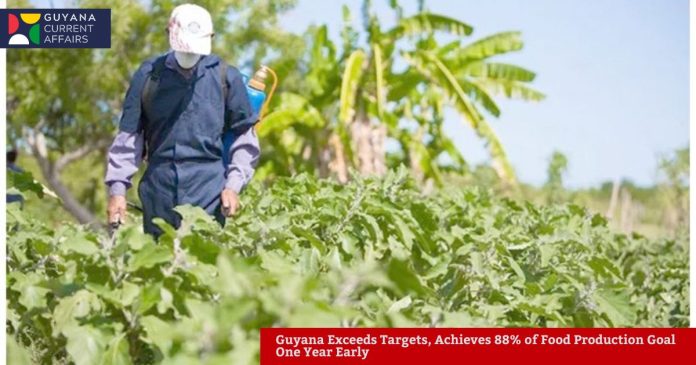Guyana has surpassed regional expectations for agricultural production, achieving 88% of its food production targets a full year ahead of schedule. This milestone positions Guyana as a regional leader in the Caribbean Community’s (CARICOM) ambitious push to reduce the region’s food import bill by 25% by 2030.
Exceptional Performance in Agriculture
According to the Ministry of Agriculture, Guyana’s performance has been “nothing short of exceptional,” far outpacing the average achievement rates of other CARICOM nations. In 2022, Guyana produced nearly 899,000 metric tonnes of food. By the end of 2024, that figure soared to 1.26 million metric tonnes, driven by major increases in rice yields, a more than 1,000% surge in brackish water shrimp production, and significant gains in corn, soya, and prawn output.
These achievements are credited to targeted policy decisions and substantial investments in agricultural infrastructure, research, and support for farmers. The government’s focus on diversifying crops and expanding cultivated acreage has played a pivotal role in accelerating production.
Moving Toward Self-Sufficiency
Guyana’s agricultural strategy is also making the country self-sufficient in key areas. For the first time, Guyana is producing all the corn and soya needed for livestock feed, with self-sufficiency in this sector expected by the end of 2025. Over 10,000 acres are already under cultivation, with projections to reach 30,000 acres by the end of next year. This shift is expected to reduce costs for meat and poultry, further strengthening food security and freeing up resources for investment in other sectors.
Regional and Economic Impact
Guyana’s rapid progress is a cornerstone of CARICOM’s “Vision 25 by 2025” initiative, which aims to bolster regional food production and reduce dependency on imports. The country’s achievements have been supported by both public and private sector investments, including significant upgrades to fisheries and livestock infrastructure and the launch of projects like the Broiler Breeder Project.
While Guyana’s nominal food import bill has grown, much of this increase is attributed to global price inflation rather than higher volumes of imported food. The government has shifted its focus to production targets to ensure that national food security remains the top priority.
Looking Ahead
With 88% of its food production goal already achieved, Guyana is on track to meet—and possibly exceed—its targets well before the 2030 deadline. The country’s success story is being hailed as a model for the region, demonstrating how strategic investment, policy support, and innovation can drive food security and economic growth.
As Guyana continues its upward trajectory, the nation stands as a testament to the power of focused agricultural development and regional cooperation.


